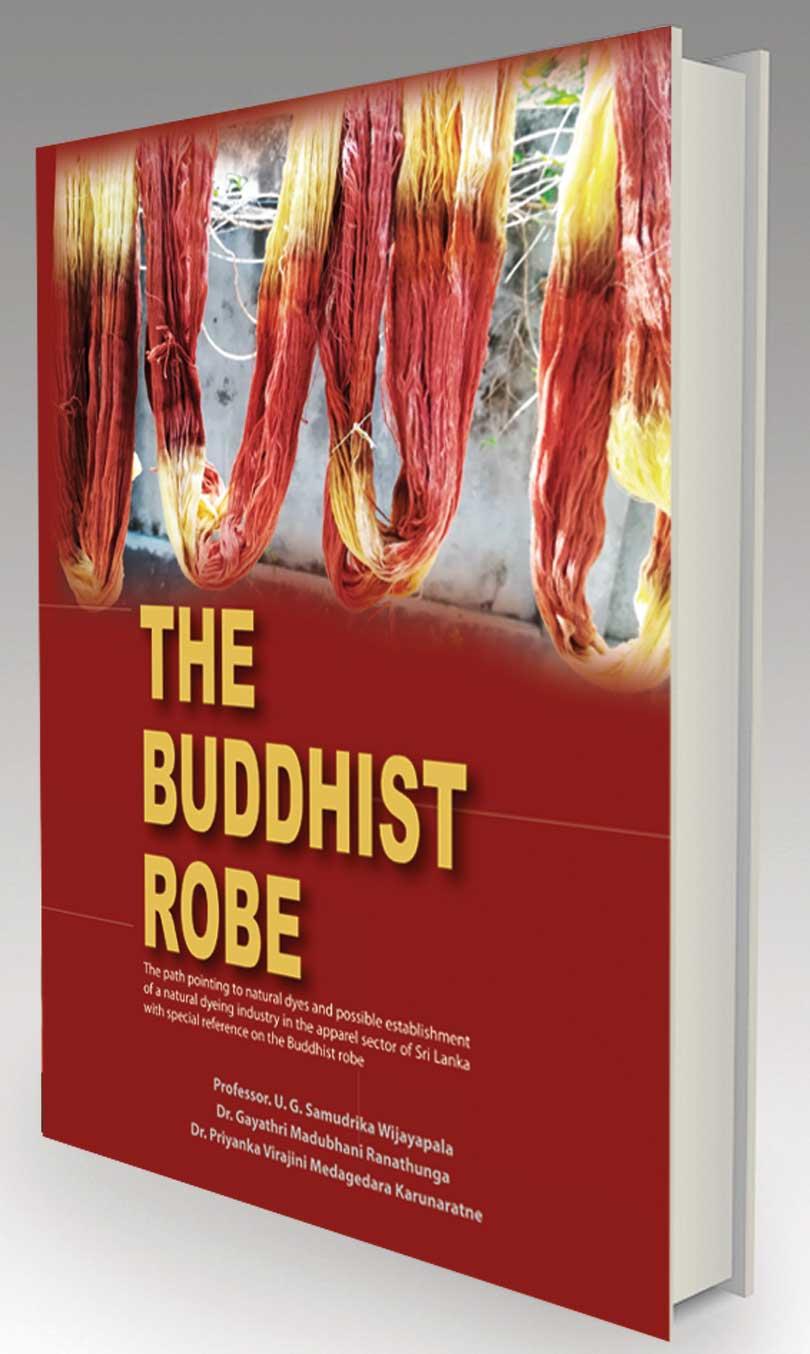Reply To:
Name - Reply Comment
 Chemical and Process Engineering Department of the Moratuwa University; Project Director, Coordinating Secretariat for Science Technology and Innovation (COSTI); Science, Technology and Research Ministry Authoresses
Chemical and Process Engineering Department of the Moratuwa University; Project Director, Coordinating Secretariat for Science Technology and Innovation (COSTI); Science, Technology and Research Ministry Authoresses
Prof. U.G. Samudrika Wijayapala, Dr. Gayathri Madubhani Ranathunga and Dr. Priyanka Virajini Medagedara Karunaratne; Senior lecturers, Textile and Clothing Technology Department, Engineering Faculty, Moratuwa University. Published by S. Godage & Brothers (PVT) LTD – March 2019.
The book titled ‘The Buddhist Robe’ is an exciting read that transports the reader through a journey of an ancient practice into the modern days which has survived to-date in Sri Lanka. The book is a result of a partnership of contributors of engineering, arts and design – an appealing combination that should result in a remarkable output and I certainly vouch for that creative output which is present. It is interesting to read the versatile nature of the Buddhist monastic robe, the possibility of seat-spread to a windbreak. No wonder the robe is taken as a paradigm for resource cascading by many an author who indicates the relevance of the concept to a sustainable society. The authoresses’ comment on this clothing style, perhaps as the oldest of the kind in vogue after 2,500 years, is fascinating. I wish they gave a more definitive statement on that by spending a little more time before publishing.
The title of the book hides, perhaps, an inner story of greening the textile industry. There is an addition to the title in much more small print
Yet, the title of the book hides, perhaps, an inner story of greening the textile industry. There is an addition to the title in much more small print – the path pointing to natural dyes and possible establishment of a natural dyeing industry in the local apparel sector with special reference to the Buddhist robe which articulates an important concept. Dyes add colour and colour of all things attract textile to the user as such significant quality parameters are involved today when dyes are applied and their efficiency is assessed. The textile and apparel industry witnessed the rapid transformation to synthetics upon their discovery but with time environmental issues did become apparent. How are we to address this emerging problem is what the book tackles in an innovative approach.

The Buddhist robe never left nature and 2,500 years later, the practice continues – strengthened by modern tools, there is an opportunity for an eco-industry. Here is the coupling of the inner-story to the primary title of the book. The saffron robe introduces to the reader the sustainability aspect of the fabric of a Buddhist monk. Taking that lesson, the reader is sensitised to try over a multitude of dyes and colours coming from flowers, roots, wood, bark and stem, for a brand new industry in Sri Lanka.
As the contents span from arts to sciences, there is something for everybody in this guide. It is a book that must be in anyone’s collection. It has more in the sense that an economic planner too can learn on an approach the world is crying out for today.
The book is well-illustrated on both the past and the present; valuable to the reader would be the illustrations on the robe and its technicalities. Illustrations on the robe’s journey through time are a story in itself. The extensive bibliography adds value.
I congratulate the three authoresses for an interesting and useful publication. However, do not stop at the 90th plant – turmeric – go on. Remember, we are in a biodiversity hotspot!
